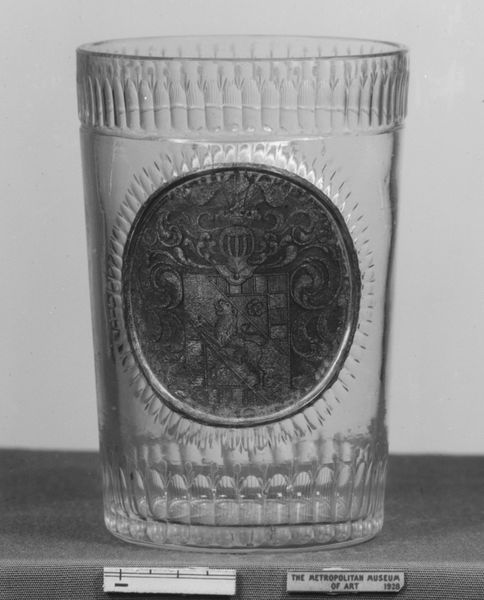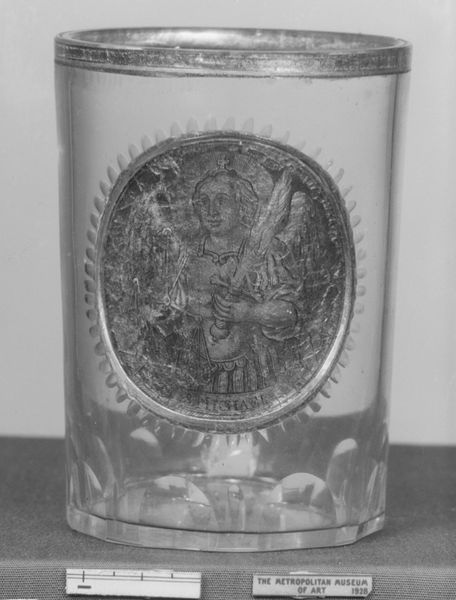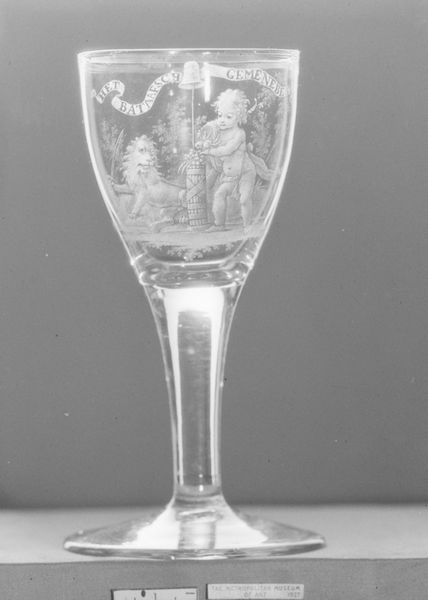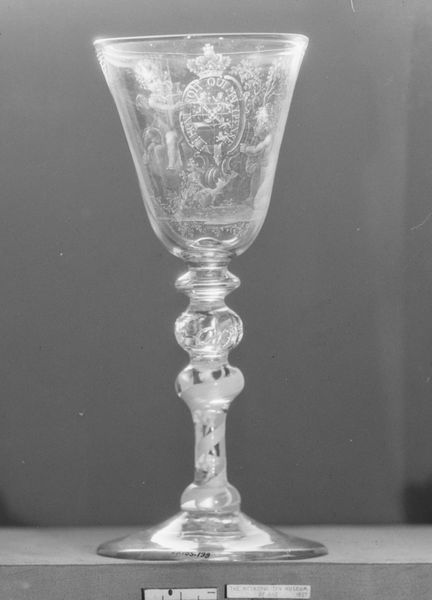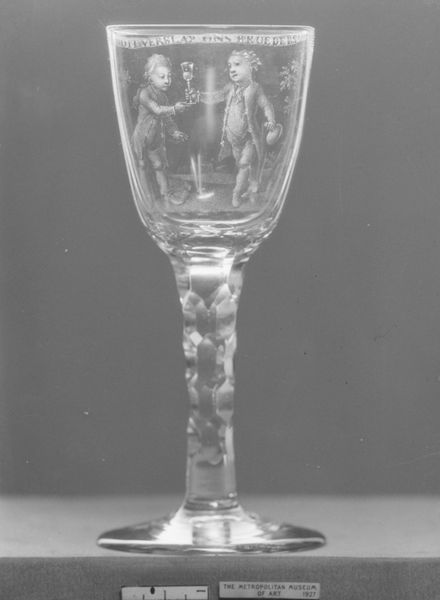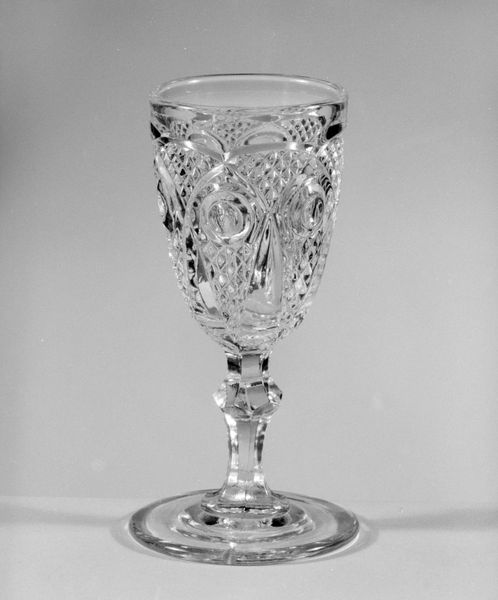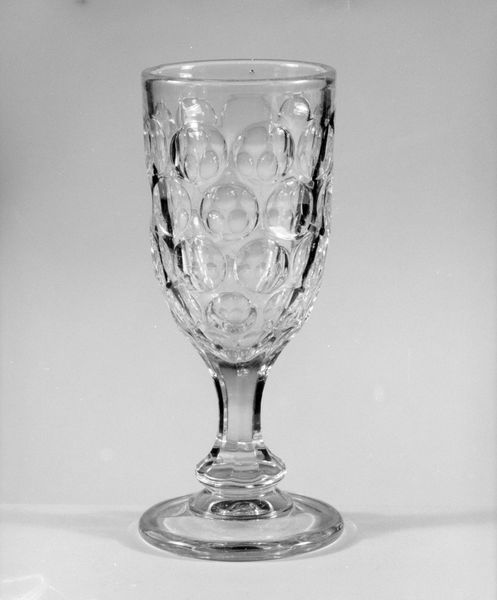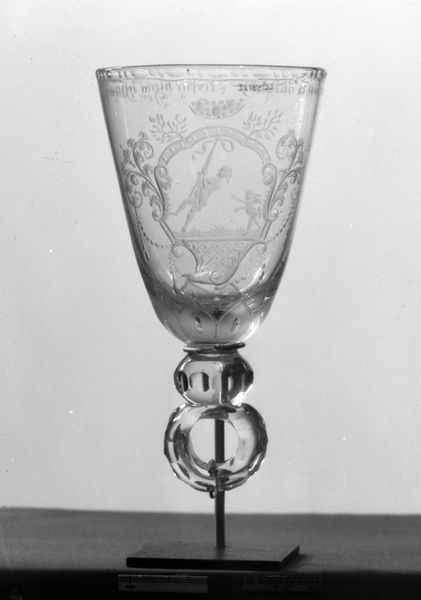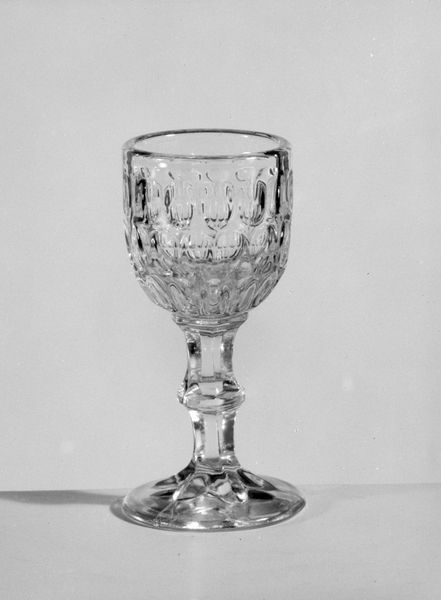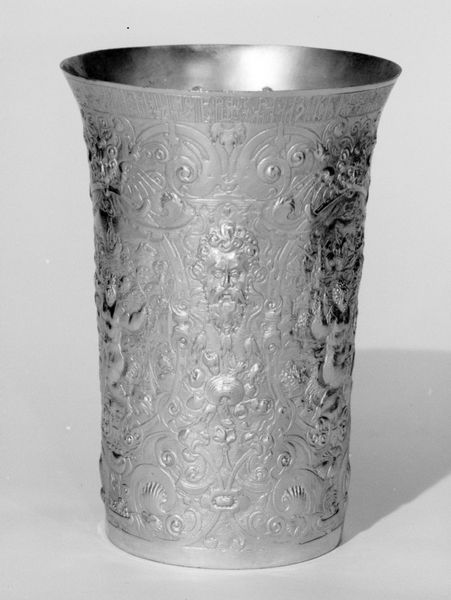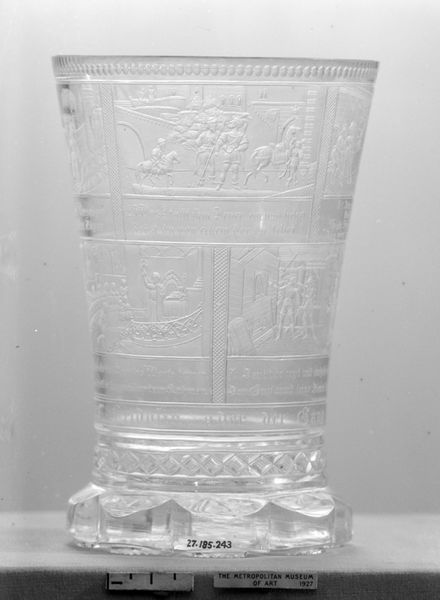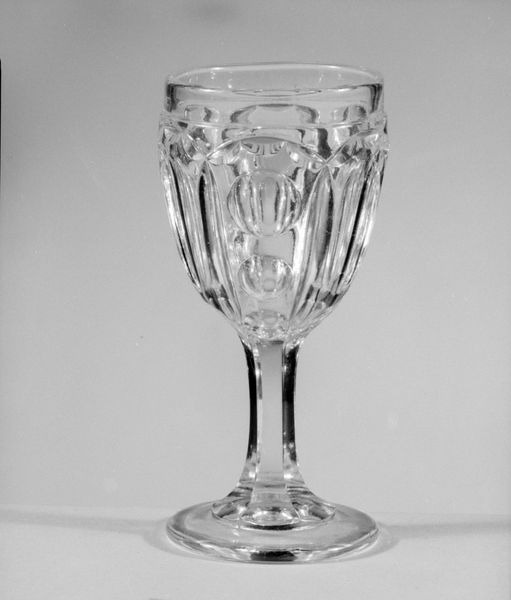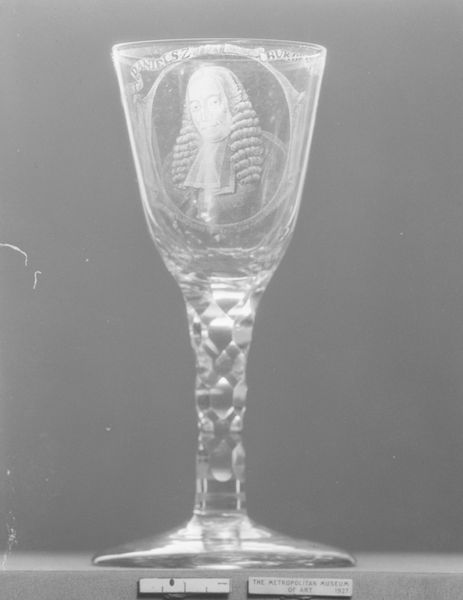
glass, sculpture
neoclacissism
glass
sculpture
decorative-art
Dimensions: Overall: 4 1/4 × 2 7/8 in. (10.8 × 7.3 cm)
Copyright: Public Domain
Curator: Here we have a glass beaker, made by Johann Joseph Mildner between 1785 and 1795. It’s currently held in the collection of the Metropolitan Museum of Art. Editor: It strikes me as surprisingly… austere, yet elegant. The cylindrical form and the clear glass, though seemingly simple, provide a unique canvas for the ornamentation. There's a strange duality. Curator: Mildner’s work epitomizes Neoclassical aesthetics, prioritizing restraint, symmetry, and meticulous craftsmanship. The form adheres to classical principles, while the engraving exemplifies skilled artistry and decorative restraint. Look at the central medallion. It displays the engraved figures with careful execution and symbolic clarity. Editor: But think about the glass itself. This isn't just any material; it requires a very high level of skill to produce flawless glass. The subtle details around the base—they're repetitive, but that adds a sense of almost industrial production even within the decorative-art piece. What kind of workshop produced something so… precise? It wasn't an amateur effort, but an establishment equipped to meet the growing demands of a burgeoning upper-middle class that wanted art in their everyday lives. Curator: Precisely, and consider the composition of the engraved decoration—the careful symmetry, the allegorical themes, the clarity of line. These were artistic choices rooted in the Enlightenment’s ideals of order and reason. Editor: Order perhaps... But I see a conversation about taste happening. This beaker reflects evolving social hierarchies where possessing items of crafted excellence, but made efficiently, defined status. The work embodies larger themes around wealth and its material expression. Curator: You bring up a strong point. Beyond mere decoration, these elements create a symbolic whole, an encapsulation of contemporary aesthetics and values—visible refinement that transcends the mere object. Editor: Right, making what you drink from part of a carefully constructed lifestyle. In a way, you’re handling not just a beaker, but a concentrated snapshot of material aspirations and social class dynamics in the late 18th century. Curator: Indeed. Thank you for illuminating the context surrounding the materiality of its making! Editor: Likewise! Considering its structure through that historical lens gave it such new depth.
Comments
No comments
Be the first to comment and join the conversation on the ultimate creative platform.
